Ray Stevens Death – Heart Attack
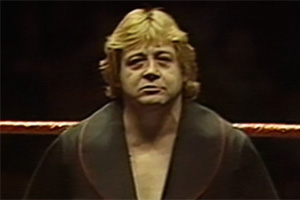
Wrestling legend Ray Stevens, dead at 60 from a heart attack.
1935-1996 (Age 60)
Ray Stevens, a wrestler whose career was bookended by two eras when wrestling aired on network TV and whose body of work was only outshined by his incredible zest for living.
Stevens began wrestling during the era of the legendary blond “Gorgeous” George and ended his career during the heyday of another legendary blond—Hulk Hogan.
A blond legend in his own right, Stevens earned a reputation amongst fans and his fellow wrestlers as one of the industry’s best talkers and workers. One of wrestling’s most incredible personalities, it’s little surprise Stevens appeared in the movies The Wrestler (1974) and Paradise Alley (1978).
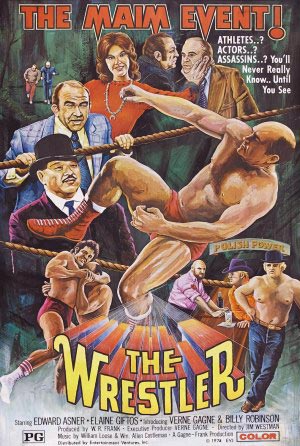
Ray Stevens appeared in the 1974 film, The Wrestler.
Born Carl Ray Stevens, the man who would become better known as “The Blond Bomber” Ray Stevens and Ray “The Crippler” Stevens entered the world on September 5, 1935.
After wrestling as an amateur in the YMCA, Stevens entered the pro ranks at age 15, debuting in 1950. With “Nature Boy” Buddy Rogers mentoring him, Stevens excelled in the ring, winning a number of titles early on in his career, just a few of the many belts he’d eventually capture.
Stevens married female wrestler Theresa Theis in 1952, and credited Theis with helping him further his skills.
A Golden Boy in the Golden Age of Wrestling
It didn’t take Stevens long to reach the top.
By 17, he was main eventing, working with “Gorgeous” George, one of the biggest names in the industry at the time (if not the biggest). Nicknamed “The Blond Bomber,” Stevens’ finisher was a knee drop off the top turnbuckle which became known as “The Bombs Away” knee drop. It would win Stevens many matches and become the focus of one of the territory era’s most despicable acts.
“The Blond Bomber’s” career couldn’t have come at a better time as he wrestled when professional wrestling was all over the United States thanks to its popularity on network television. Stevens would make such a name for himself as a hated heel that even when wrestling’s national popularity waned, his career was made.
In addition to singles matches, Stevens branched out into tag team wrestling, forming a fictitious brother team with Don Fargo and later, Roy Shire. Stevens’ team with Shire would lead to one of the most successful periods later on in his career when Shire began booking his own promotion.
The San Francisco Threat
In 1961, Stevens began working in Roy Shire’s Big Time Wrestling, a territory located in San Francisco, California. Stevens quickly got over as a heel thanks to his vicious insults of fans, opponents, and the Golden Gate City. However, Stevens’ insults were nothing compared to the injury he would inflict on the promotion’s beloved babyface, Pepper Gomez.
Promoters played upon Pepper Gomez’ background as a bodybuilder to build him up as “the man with the cast iron stomach,” a wrestler whose abdominal muscles were seemingly impervious to pain. Opponents who punched or kicked Pepper had no effect on the man’s power abdomen, often hurting themselves in the process. Just to build up Pepper’s powerful six-pack, Shire had Gomez perform an amazing display in the ring, one with tragic consequences for Gomez.
Gomez invited wrestlers to climb a ladder and jump off it onto his stomach. Several tried, but with Pepper laughing off their blows. Ray Stevens wasn’t impressed and argued that the wrestlers weren’t trying hard enough.
“The Blond Bomber” said Gomez would feel it if Stevens was allowed to jump off the top of the ladder. Gomez agreed and Stevens jumped off the top. To everyone’s amazement, Pepper was unharmed. Stevens asked for one more try, and the confident babyface agreed. Stevens climbed the ladder, but this time he dove off the ladder, delivering his “Bombs Away” knee drop to Gomez’ throat. Gomez sold the attack, coughing up blood and selling it like he’d been trampled by an elephant.
Stevens became the most-hated man in wrestling as Big Time Wrestling made it known Gomez might never wrestle again. Naturally, he did return, leading to a sell-out of the area’s Cow Palace Arena, breaking an attendance record previously set by Elvis Presley.
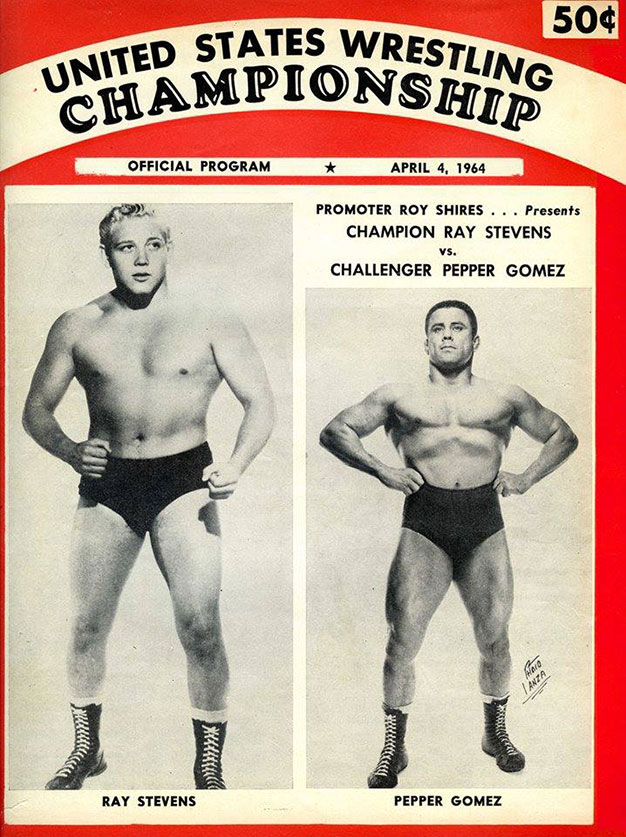
According to Dave Meltzer’s book Tributes, promoter Shire planned to hold the rematch at Candlestick Park, hoping to set an overall attendance record for professional wrestling. Unfortunately, Ray Stevens’ well-known daredevil adventures saw him sidelined with a broken ankle for eight months following a go-cart race accident.
The Blond Bombers
Stevens would continue working in San Francisco, teaming with Pat Patterson as the Blond Bombers, one of the most respected tag teams of the 1960s.
Stevens and Patterson captured the San Francisco version of the NWA World Tag Team Championship three times, battling teams such as The Destroyer and Billy Red Lyons, Ciclón Negro and the Mongolian Stomper, and Pepper Gomez and Pedro Morales.
The Blond Bombers reunited in the American Wrestling Association (AWA in the 1970s), capturing the AWA World Tag Team Championship from the High Flyers (“Jumping” Jim Brunzell and Greg Gagne).
Stevens was a fixture in the AWA during the 1970s, forming a championship tag team with Nick Bockwinkel, with Bobby Heenan guiding their careers.
Here There and Everywhere
Ray Stevens’ incredible ability to talk fans into buying tickets to see him get what was coming to him, combined with his uncanny ability to sell for opponents put him in high demand around the globe.
The man who would later become known as “The Crippler” (earning this nickname after breaking the leg of wrestler Dr. X in the AWA), worked in a variety of territories, including Big Time Wrestling, Championship Wrestling from Florida, the AWA, Jim Crockett Promotions, and Australia’s World Class Championship Wrestling.
Stevens worked in the AWA, the National Wrestling Alliance (NWA), and the WWWF/WWF. He held a variety of titles including the WWWF’s United States Championship, WCW’s IWA World Heavyweight Champion, JCP’s NWA World Tag Team Championship, and Big Time Wrestling’s United States Heavyweight Championship.
A list of Stevens’ top opponents is beyond the scope of this article, but he was known for his dream match against Bruno Sammartino in the 1960s (a match Stevens won by count-out), his feud with Pat Patterson, his program with Bobo Brazil in the WWWF, his surprise babyface turn in the AWA where he feuded with Nick Bockwinkel in 1977, and his brutal attack on Jimmy “Superfly” Snuka in 1982, an angle which led to Snuka’s babyface turn.
Living the Good Life
Ray Stevens’ ability to make an opponent look like a champion would lead to later comparisons with “Nature Boy” Ric Flair. The two blonds were also alike in their love of life, which included a passion for hard-drinking nights and the ladies.
In addition to his well-known propensity for booze and the ladies, Stevens’ love for daredevil antics outside the ring would keep him out of the ring for at least two major programs (the aforementioned Pepper Gomez feud and a later feud with Pat Patterson).
Stevens developed the move where an opponent threw him into the corner and he flipped over the top, a move later used by Ric Flair and Shawn Michaels.
According to Dave Meltzer’s May 13, 1996 Wrestling Observer Newsletter obituary of Stevens, “The Blond Bomber” was the first wrestler to consistently hit a move off the top rope.
To some, Stevens was a kid at heart. Big Time Wrestling announcer Walt Harris said of Stevens:
“He was always a little boy who never grew up. He never paid taxes for years. For years Verne Gagne had wanted him but he didn’t want to go. Gagne offered him a big amount of money if he’d come work there and he’d take care of all his income tax problems and the offer was too good to turn down.”
Longtime rival Pepper Gomez would comment, “The guy made a lot of money in wrestling and threw away a lot of money and ended up with shit.”
Jim Cornette would comment on Stevens’ wild life:
“He had made millions of dollars, and should have made millions more, but very little if any of it was still in his possession. He was once the center of attention everywhere he went and lived in opulent surroundings, now he was in a dark apartment in a town no one even knew he was living in. But that man had probably had more fun in his lifetime than you, and me, and any other ten people we know put together. That? That couldn’t possibly, ever be taken away from him.”
Ray Stevens retired in 1992, later appearing at WCW’s 1994 Slamboree pay-per-view.
Undaunted to the End
Despite his financial difficulties, Stevens continued living as he chose, even after a quadruple bypass surgery roughly a year before his death.
Like Flair, Stevens’ later health problems didn’t seem to hold him down, and despite financial problems, Stevens never seemed to worry about tomorrow.
Ray Stevens died in his sleep on May 3, 1996. He was 60 years old at the time of his passing. Stevens was survived by his children Timothy, Roy, Laura, Kelly, and Carl.
Stevens was cremated, with his ashes given to his ex-wife.
Other notable wrestlers died in 1996 including Dick Murdoch, and Sapphire.
What are your memories of Ray Stevens? Let us know in the comments below.

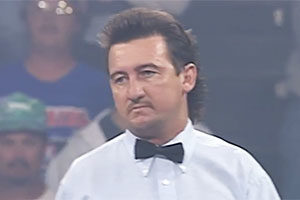
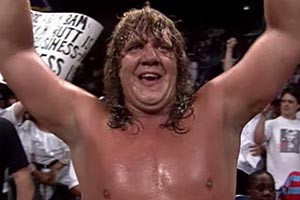
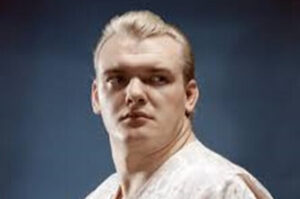
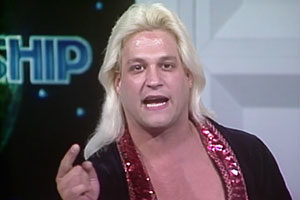
Leave a Reply